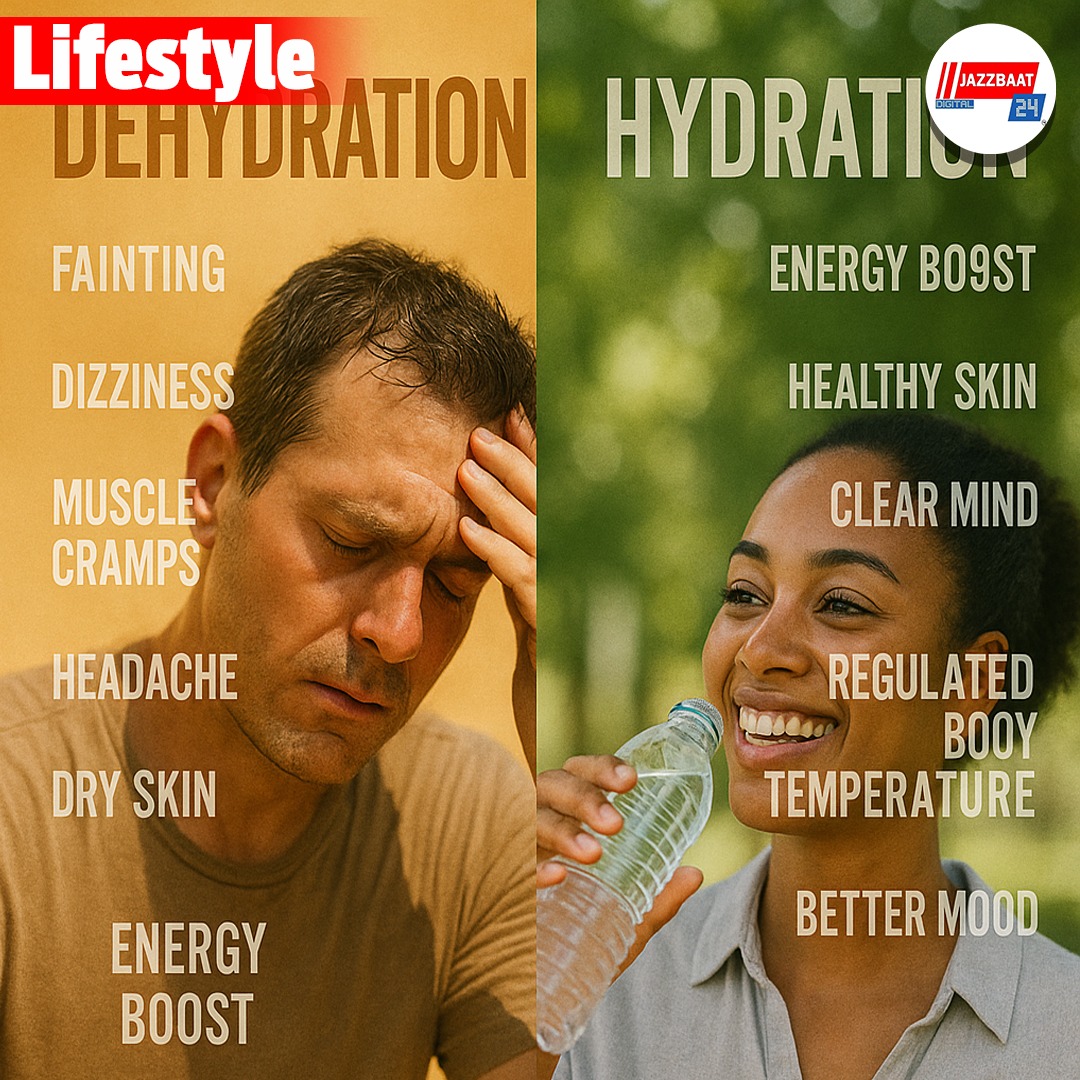
With rising temperatures in most areas of India and the world, dehydration and heatstroke assume priority as health issues, particularly at the height of summer. Both are interlinked and can grow quickly, mainly among children, the elderly, workers in the open, and those with existing medical conditions. Knowing how to avoid dehydration and heatstroke and recognizing their initial warning signs is important to protect health from the effects of hot weather.
Dehydration results when the body loses more water than it absorbs, resulting in too little water to perform the normal functions of the body. It can happen rapidly with high temperatures because of excessive sweating, but also as a result of insufficient fluid intake, excessive exercise, vomiting, diarrhea, or some medications. The initial symptoms of dehydration are subtle but can escalate rapidly. Symptoms that are common include dryness of the mouth and throat, excessive thirst, dark yellow urine, reduced amount of urine, fatigue, dizziness, headache, and dry or cool skin. Children may also have other warning signs such as reduced tearing in response to crying, sunken cheeks or eyes, and irritability.
If left unchecked, dehydration can lead to heat exhaustion, then heatstroke, a potentially life-threatening condition. Heatstroke happens when the body's temperature control system is overtaxed by the heat, raising the core body temperature to levels that are potentially lethal, typically more than 40°C (104°F). By now, the body cannot cool itself efficiently, and organs may be damaged in a matter of minutes.
Early signs of heatstroke are a body temperature that is high, altered mental state or confusion, slurred speech, agitation, racing heartbeat, hot and dry flushed skin (without sweating), vomiting or nausea, and fainting. In contrast to heat exhaustion, in which the skin might be clammy and cool, heatstroke will usually have hot, dry skin because the sweating mechanism of the body has failed. Medical attention is needed immediately if heatstroke is suspected, as it can rapidly result in organ failure, brain damage, or death if not promptly treated.
Prevention of dehydration and heatstroke demands an active effort, particularly when there is extreme heat. Hydration is the most useful strategy. People need to consume water regularly during the day even without feeling thirsty because the sensation of thirst does not always accurately measure one's hydration level. If exercising or outside, fluid consumption has to be upped and breaks taken in cooler or shaded environments frequently. Wearing light-colored, loose, and light garments keeps the body cool, as does the prevention of physical work during peak sunlight hours, which is generally from 11 AM to 4 PM.
Careful attention must be paid to groups that are more vulnerable, for example, babies, older persons, and chronically ill people, since they are at high risk of developing dehydration and heat-related conditions. It is equally necessary to make contact with the neighbors and other family members who live alone, especially during a heatwave.
Identifying early signs of heatstroke and dehydration and acting rapidly can be the difference between life and death. At the very first sign of distress, evacuate the victim to a shaded location, provide water if conscious, and call a doctor if signs are severe or do not wane. Awareness, preparation, and swift response can go a long way to minimize the hazards of dehydration and heatstroke and make summer not only safer but also healthier for everyone.